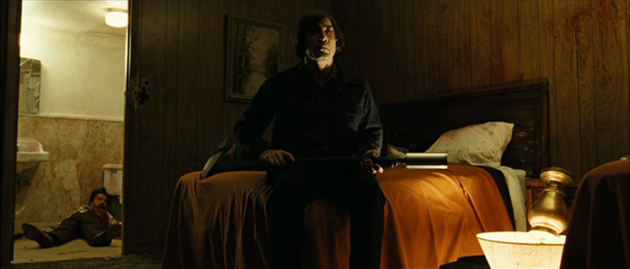Jess Gonchor

AS: Did you go out to West Texas before you started shooting?
JG: No, I didn’t. I did some research. I’d been to the Midland/Odessa area before so I knew what it was all about. You know these movies did not have a tremendous budget. I really had to just start working. Start figuring out how to tie the whole movie together -you know, the exteriors to the interiors. It’s just so much to figure out. So I didn’t really have any time to go. I’ve done it on other movies. On Capote there was no way I was going to Winnepeg [the shooting location] before I saw where this crime, the four murders, took place. I had to go see that [in Kansas] because I didn’t know what it was. But West Texas I had a pretty good idea about.
AS: No Country for Old Men feels like it’s very realistic on one hand but it’s also very stylized, like the writing is. How do you get that balance between the realism and style?
JG: The first thing is to keep it real. It’s gotta be believable. Especially on No Country for Old Men you know it first of all has to be real, it has to be believable, otherwise it’s going to take away from the story. My job is just to facilitate. To pull the audience through the movie visually and not to go too far with the craft. William Eggleston’s photographs were very influential and if you look at that guy’s photographs they’re stylized but they’re real. I sort of adopted that mantra in the look of No Country.
It was a three-way chase: Moss was running from Chigurh, and Chigurh was running from the law. So how could I keep the amazing pace of this movie without up-staging all the great things? You make it real but push it to the mark just before it starts teetering on the edge and becoming unbelievable. This took place in 1980 and really 1980 in that part of the country could be the 1970’s. So I had the luxury of really making it dated without, obviously, paisley patterns and things like that. Just that real, sun-drenched, oak veneer William Eggleston, desert dirt look.
AS: You mention not upstaging the story. I often ask the question whether production design should be visible or invisible…
JG: It’s not completely invisible. I try to pay attention to detail. I try to get a couple of great things in the shot that also help tell the story about the character or the place. The things that you get into the frame are not an accident. It takes a lot of time to figure out what are you going to put in there. That’s why I keep working on those Coen brothers movies because they’re very well planned out. This is what we’re going to shoot on this day, it’s going to be shot in this direction and the sun’s going to be over here. You’re able to take the time to figure out what the best thing for that scene is -supporting the character and supporting the page that’s written and the location that it’s in. It’s really very important.
Pingback: Sarah Greenwood